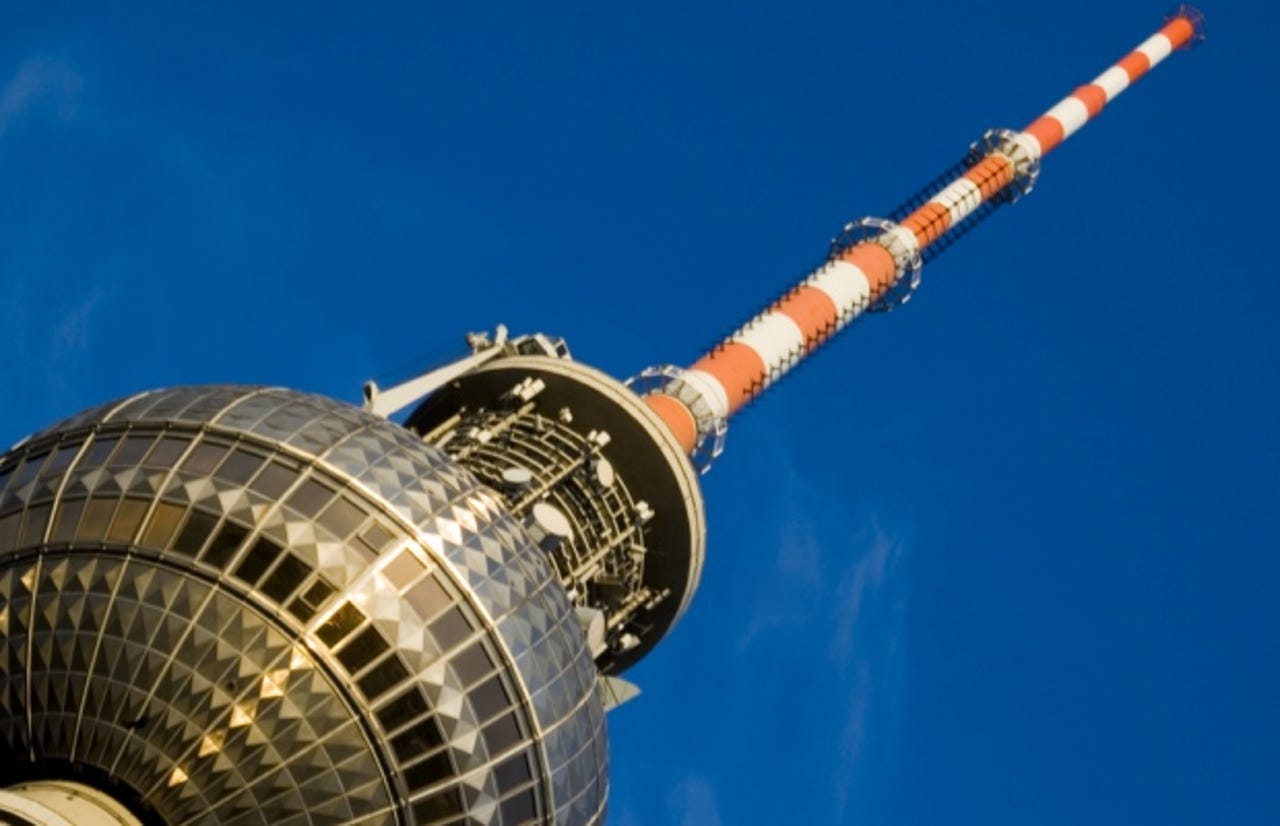4G in Europe: How far, how fast and how much is LTE in Germany?


The German LTE market seemed to go off with a bang compared to other major European markets: the country held its 4G spectrum auctions relatively early, in 2010, selling off blocks of spectrum in four different frequency bands in one go, rather than selling separate bands several months apart.
Since then, however, the momentum has slowed somewhat. Three out of the four German mobile network operators are now offering LTE on a commercial basis to consumers, but seem to be treading cautiously with pricing.
"The rollout has been slow and predictable, limited initially to areas of little or no fixed-broadband connectivity, by regulatory insistence" — Emma Mohr-McClune
As yet, little real innovation appears to be on offer, with tiered data rates and data allowances the only real price differentiators — although mobile analyst Wireless Intelligence has previously noted that Vodafone Germany "broke the ground with its tiered data rates (per Mbps), which marks a move beyond tiered data quotas (per MB) — and we expect to see many operators follow suit."
Other analysts are less convinced: Emma Mohr-McClune, global service director, of consumer services at Current Analysis, finds it worrying that German operators have yet to be really challenged on LTE.
"The rollout has been slow and predictable, limited initially to areas of little or no fixed-broadband connectivity, by regulatory insistence," she says. "The level of competition is moderate to low. Spectrum has yet to be acquired by a non-traditional player, and no single MNO [mobile network operator] has taken a particularly aggressive stance on pricing."
Who got what spectrum
Germany's spectrum auction ended on 20 May, 2010 after 27 days and 224 bidding rounds. Up for grabs were 41 frequency blocks in the 800MHz, 1.8GHz, 2GHz and 2.6GHz bands; 2GHz and 2.6GHz were available as both paired and unpaired spectrum. Vodafone secured 12 blocks of spectrum for €1.42bn; Telefonica's O2 paid €1.38bn for 11 blocks; E-Plus bought eight blocks for €283.6m; and Deutsche Telekom's T-Mobile acquired 10 blocks for €1.3bn.
The auction raised almost €4.4bn in total, which was far shy of original estimates. Reports at the time suggested the amount raised was below target because the market was still spooked by the aftermath of the costly 3G auctions — and the onset of the global financial crisis doubtless did not help matters.
In terms of who got what, the general assessment was that E-Plus — Germany's third-place mobile operator, which uses the BASE brand for its services — lost out compared to its competitors. E-Plus secured spectrum in all bands apart from the 800MHz "digital dividend" band, which is generally seen as the most valuable because of its propagation characteristics. At the time, Reuters said that thriftiness on the part of KPN, the Dutch telco that owns E-Plus, was to blame for putting its German operations "in jeopardy".
So far, E-Plus remains the only German network operator not to have launched LTE services on a commercial basis, preferring instead to test LTE for the time being and focus on building out HSPA and HSPA+. After all, HSPA+ can now support data download speeds of up to 42Mbps.
The three other German operators — Vodafone, T-Mobile and O2 Germany — all now offer 4G LTE services as part of their smartphone, tablet and laptop plans, and also provide "Zuhause" DSL replacement plans. All three used the 800MHz band for their initial services, with a focus on building out the network in underserved "white spots" in rural areas.
Vodafone: The real thing?
Vodafone was the first to launch commercial services to consumers in late 2010, and has also taken the interesting approach of calling its services "RealLTE" — a dig at the capacity of rivals' networks, perhaps? While many of the LTE-watcher sites that have sprung up in Germany see "RealLTE" as little more than a marketing gimmick, LTE-Anbieter.info adds that there is some meat to Vodafone's claims, noting that it has the most extensive LTE network in Germany with 75-percent coverage planned for 2013; it also offers the best indoor coverage.
LTE is included in the Vodafone Red smartphone plans and offers download speeds of up to 50Mbps. For example, Vodafone Red Premium costs from €104.99 a month with a smartphone and includes 10GB of data, plus unlimited voice and SMS. LTE plans for tablets and laptops come under the MobileInternet Flat plans, with MobileInternet Flat 50.0 offering 10GB per month at 50Mbps speeds for €44.99 a month over two years.
Deutsche Telekom began its 4G offensive in February 2011, using the Mobile World Congress trade show in Barcelona to launch its first "LTE-Stick" for laptop-based plans. The operator also gave its own take on the term "4G", which many industry observers (myself being one) believe has been misappropriated for use with LTE (which as its name suggests, is merely an evolution of existing 3G networks based on UMTS/HSPA). For its part, Deutsche Telekom sees "4G" as a "seamless user experience" (sorry) that incorporates several technologies: LTE, HSPA+ and WLAN.
As things stand, Deutsche Telekom's mobile arm, T-Mobile, offers LTE as an optional extra on its Complete Mobil smartphone tariffs: the LTE Speed Option can be bolted on for €9.95 a month and adds up to 2GB of extra data. Under a current promotion, the operator is providing LTE for free over a three-month period, with download speeds of up to 100Mbps. The premium Complete Mobil plan costs €53.95 month with a smartphone, and includes 1GB of data, SMS and voice minutes, and unlimited access to Deutsche Telekom's public Wi-Fi hotspot network. For tablet and laptop use, Deutsche Telekom provides separate Mobile Data plans that focus exclusively on data. The premium plan, Mobile Data XL, includes usage of the LTE network and costs €79.95 a month for 30GB of data at download speeds of up to 100Mbps, with unlimited Wi-Fi.
Finally, O2 Germany, owned by Spanish telco Telefonica, began offering LTE "Zuhause" plans in mid-2011 and now includes LTE in its O2 Blue L smartphone plan, with speeds of up to 21Mbps for 2GB a month at a monthly price of €44.99 over 24 months. The plan includes unlimited SMS and voice minutes. The operator also offers LTE with speeds of up to 50Mbps under its tablet or laptop plans: O2 Go + Surf Flat XXL costs €40.49 a month and has a monthly cap of 10GB.
LTE doesn't come cheap
In terms of devices, the operators typically list LTE-compatible smartphones such as the iPhone 5, Nokia Lumia 820 as well as Samsung and HTC smartphones. Tablets tend to include the Apple iPad and iPad Mini and the Samsung Galaxy Note 10.1.
As the various plans illustrate, LTE or 4G in Germany does not come particularly cheap
As the various plans illustrate, LTE or 4G in Germany does not come particularly cheap. "The fact that most of the perceived value brands in Germany are in fact operator-controlled secondary brands (eg FONIC, Simyo, Congstar etc) has led to a situation where LTE pricing in Germany today is still safely contained to primary brand retail channels, and higher-value subscription contracts with relatively little value evolution over the last 12 months," Mohr-McClune says.
From the point of view of Wireless Analysis, the tiered data rates (such as from 7.2Mbps to 50Mbps at Vodafone Germany) "will finally allow operators to see how their customers truly value the access they provide".
Fellow telecoms analysts Current Analysis, on the other hand, sees Germany as a low-innovation market in terms of LTE use-case marketing: "LTE is still being positioned as a 'go-faster' mobile data access technology, and right now none of the local MNOs are pushing the envelope on that concept," concludes Mohr-McClune.